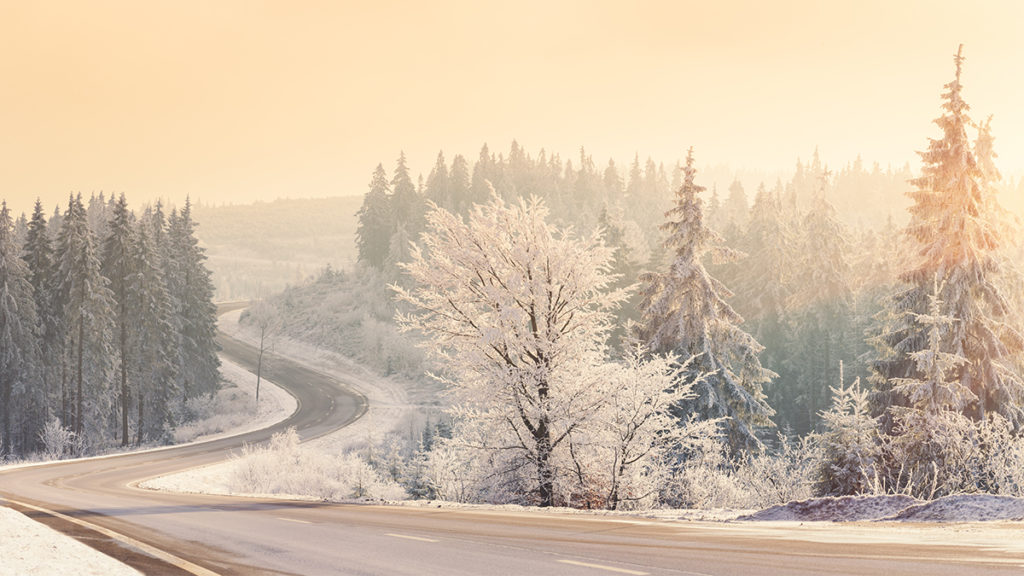Debunking Ice and Snowstorm Myths

In many parts of the country, snow, ice and frigid temperatures are an annual routine. But some things you may have heard about dealing with ice and snowstorms may not be accurate. Here are some common winter weather driving myths, debunked.
Myth #1: It’s too warm to snow today.
There’s nothing stranger than a 55-degree day with snow in the forecast. How could that possibly be? Steven Welch, a National Weather Service meteorologist in Buffalo, New York, offers an explanation. He said it could be because a cold front on the way is slated to bring dramatically cooler temperatures, setting the stage for snow.
“A colder air mass — polar or arctic air — coming from the north or west, usually behind a cold front, can cause a pattern change, which is more favorable for snow,” he says.
Myth #2: Heavy snowfall means it’s a blizzard.
“You actually don’t need falling snow for a blizzard,” Welch says. In order for a blizzard warning to be declared, certain specific conditions have to be happening or expected, according to the National Weather Service (NWS)1: winds of greater than or equal to 35 mph with falling or blowing snow and your visibility has to be less than one-quarter of a mile for three hours or more.
“You can get heavy snow and not much visibility, but the weather isn’t classified as a blizzard because of the lack of strong wind,” Welch adds. There’s even something called a “ground blizzard,” where snow that is already on the ground creates blizzard conditions, NWS notes.2
Myth #3: The ground’s not frozen, so snow won’t stick.
Even if the ground is above freezing, snow can start to stick as it falls and then melts and cools the ground, Welch says. And this is typically the case even with a few days of above-freezing temperatures, he adds. Meteorologists may measure several feet underground to see how deep down the ground is frozen or thawed, he explains. The ground typically freezes from the top down. With warmer ground, the snow may melt at first, but as the temperature begins to drop, a thin layer of ice or a layer of slush may form before the snow starts to accumulate.
Myth #4: Weather watches and warnings are not important.
You may not be able to alter what’s coming, but you do want to be prepared. The National Weather Service’s weather advisories, watches and warnings should be taken seriously. The NWS issues a winter weather advisory when snowy weather is on the way, but conditions aren’t hazardous enough to justify a warning. It issues a winter storm warning when a significant hazardous weather event or events is about to occur, or is occurring. The NWS issues a winter storm watch when there’s potential for hazardous winter weather. The criteria can vary by region, NWS notes.
If you must drive during a winter storm, slow down and proceed with caution, the NWS advises, as road conditions may change rapidly. It’s also recommends keeping a winter emergency kit in your car.
Myth #5: Rock salt is safe to use to melt ice and snow.
You may consider using rock salt (also called sodium chloride) to melt ice and snow, but it’s important to be aware of potential impacts on children and pets, the National Capital Poison Center (NCPC) notes.3 If you use a deicer to melt snow or ice, don’t use more than the recommended amount. Deicers could irritate pets’ skin or paws, or even poison them if they eat enough of it. Sodium chloride also may cause a rash if children put it in their mouths, according to the center. Sand, gravel or kitty litter may be effective alternatives to help walkers and vehicles gain traction, adds the NCPC.
Myth #6: It’s OK to eat snow and icicles.
Don’t be fooled by the crystal-clear appearance of snow or even icicles. Frozen precipitation picks up air pollutants as it falls — in particular, toxic compounds from car exhaust — and may affect your health if ingested.4
Now that you know the truth about these ice and snowstorm myths, you can bundle up and enjoy the winter months — or stay warm and cozy inside.
Who is Answer Financial?
Driving in any weather can be a risk, so always carrying sufficient coverage is essential. At Answer Financial, we’re happy to talk with you about the right insurance for you. Call 1-800-258-5101 to talk about auto insurance with one of our insurance experts now or visit our site to quickly compare quotes from 40+ top-rated insurance companies.
November 17, 2023
Sources:
- National Weather Service, “Glossary,” https://w1.weather.gov/glossary/index.php?letter=b
- National Weather Service, “Glossary,” https://w1.weather.gov/glossary/index.php?letter=g
- Poison.org, “Pets, Kids, and Ice Melt Products,” https://www.poison.org/articles/ice-melt-products-harmful-to-pets-and-kids
- Z107.3, “Hey Maine! Here Is Why You Shouldn’t Eat Icicles,” https://z1073.com/hey-maine-here-is-why-you-shouldnt-eat-icicles-2/
